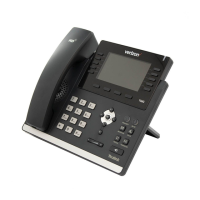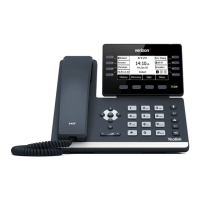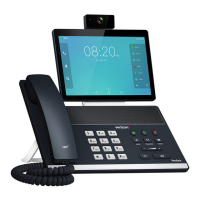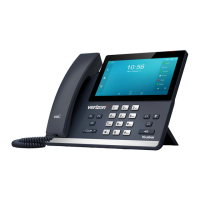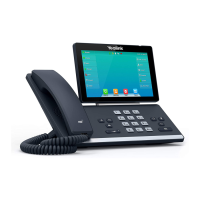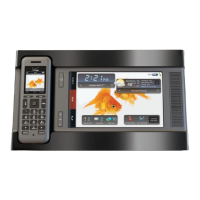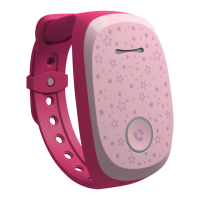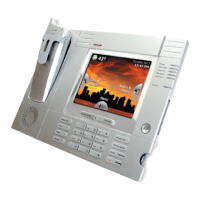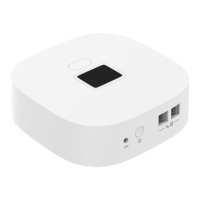Do you have a question about the Verizon One TalkT67LTE and is the answer not in the manual?
Familiarize yourself with the phone's features, user interface, and basic operations.
Describes the phone's user interface screens and status icons for navigation and information.
Overview of accessing features and viewing notifications via the control and notification centers.
Details the applications available on the second idle screen of the phone.
Explains the meaning of various status icons displayed on the phone's screen.
Covers basic gestures like Tap, Long Tap, Swipe, Drag, and Pinch for screen interaction.
Explains English input method and using the phone keypad and dial pad for data entry.
Guides through the automatic 4G LTE network activation process for the eSIM card.
Process of downloading configuration files after eSIM activation, leading to phone reboot.
Step-by-step guide to composing and sending text messages on the phone.
Instructions on how to switch the phone between LTE and LAN network modes.
Step-by-step process to switch the phone from LTE mode to LAN mode.
Describes auto-detection of signals and prompts for mode changes (e.g., LTE failure, no 4G).
Covers various methods for initiating phone calls, including from the dialer and history.
Procedures for answering calls, handling call waiting, and switching audio modes.
Options to silence or reject incoming calls, including using Do Not Disturb (DND).
Methods for ending calls and muting/unmuting audio during calls.
Procedure for placing active calls on hold and retrieving them later.
Performing direct and convenient call transfers using various methods.
Transferring calls after consultation and tips for creating conference calls.
Procedures for recording calls, conferences, and managing recordings.
How to view the total and available storage space on the phone or USB drive.
Using call pickup to answer incoming calls for other phones or within groups.
Procedures for parking calls to extensions and retrieving them from any phone.
Procedure to set the voice mail code for connecting to the message center.
Managing contacts and groups within the phone's local directory storage.
Managing local directory contacts and groups, including editing, deleting, and blacklisting.
Blocking unwanted callers by adding contacts to the blacklist.
Managing mobile contacts, including saving to local directory and searching.
Searching, viewing, and saving contacts from the corporate remote phone book.
Viewing call records, saving entries, and deleting history.
Procedures for deleting individual or all call records from the history list.
Adding, resizing, moving, and removing widgets from the idle screen.
Organizing applications by creating and renaming folders on the phone's screen.
Using the file manager to view, search, and manage files on the phone and USB.
Procedures for copying and cutting (moving) files between storage devices.
Uploading files to a server and deleting files to free up storage space.
Sharing media files with other Bluetooth-enabled devices.
Accessing and viewing photos and videos in different album arrangements and modes.
Tools for rotating, filtering, framing, cropping, coloring, and setting pictures as wallpaper.
Printing pictures and deleting pictures/videos from the Gallery.
Procedures for recording audio, conferences, and managing recordings.
Controlling playback of recorded audio, including pausing, fast-forwarding, and stopping.
Checking storage space, uploading recordings, and deleting recordings.
Setting, editing, deleting, and configuring parameters for alarm clocks.
Setting and formatting the phone's time and date, and adding clocks for other cities.
Configuring clock display modes, setting timers, and using the stopwatch.
Changing phone wallpaper and configuring screen saver settings like waiting time and type.
Setting up phone lock, unlocking methods, and changing the unlock PIN.
Customizing line keys for quick access to features, including assigning functionality and changing locations.
Adjusting volume, ring tones for phone, accounts, groups, contacts, and disabling key tones.
Enabling Bluetooth, pairing headsets, and connecting mobile phones for calls and contacts.
Managing paired devices, syncing contacts, handling mobile calls, and configuring audio features.
Changing phone's Bluetooth name and renaming paired Bluetooth devices.
Sending/receiving files via Bluetooth, and disconnecting/deactivating Bluetooth mode.
Activating Wi-Fi, connecting to wireless networks manually, and viewing network information.
Adding wireless networks manually, viewing information, and disconnecting from networks.
Turning off Wi-Fi mode, especially when connecting to a wired network.
Connecting and using wired, USB, and Bluetooth headsets with the phone.
Details on using Bluetooth and USB headsets, including compatibility and connection guides.
Investigating warnings, clearing warning icons, and rebooting the phone.
Resetting the phone to factory settings and updating phone configuration.
Manually clearing personalized configuration settings saved after provisioning.
Information on support resources, safety precautions, and electrical hazard warnings.
Important safety instructions regarding electric shock, water, heat, and power connections.
Compliance with FCC rules for digital devices, including interference guidelines.
Critical safety warnings regarding electrical hazards and fire risks.
Familiarize yourself with the phone's features, user interface, and basic operations.
Describes the phone's user interface screens and status icons for navigation and information.
Overview of accessing features and viewing notifications via the control and notification centers.
Details the applications available on the second idle screen of the phone.
Explains the meaning of various status icons displayed on the phone's screen.
Covers basic gestures like Tap, Long Tap, Swipe, Drag, and Pinch for screen interaction.
Explains English input method and using the phone keypad and dial pad for data entry.
Guides through the automatic 4G LTE network activation process for the eSIM card.
Process of downloading configuration files after eSIM activation, leading to phone reboot.
Step-by-step guide to composing and sending text messages on the phone.
Instructions on how to switch the phone between LTE and LAN network modes.
Step-by-step process to switch the phone from LTE mode to LAN mode.
Describes auto-detection of signals and prompts for mode changes (e.g., LTE failure, no 4G).
Covers various methods for initiating phone calls, including from the dialer and history.
Procedures for answering calls, handling call waiting, and switching audio modes.
Options to silence or reject incoming calls, including using Do Not Disturb (DND).
Methods for ending calls and muting/unmuting audio during calls.
Procedure for placing active calls on hold and retrieving them later.
Performing direct and convenient call transfers using various methods.
Transferring calls after consultation and tips for creating conference calls.
Procedures for recording calls, conferences, and managing recordings.
How to view the total and available storage space on the phone or USB drive.
Using call pickup to answer incoming calls for other phones or within groups.
Procedures for parking calls to extensions and retrieving them from any phone.
Procedure to set the voice mail code for connecting to the message center.
Managing contacts and groups within the phone's local directory storage.
Managing local directory contacts and groups, including editing, deleting, and blacklisting.
Blocking unwanted callers by adding contacts to the blacklist.
Managing mobile contacts, including saving to local directory and searching.
Searching, viewing, and saving contacts from the corporate remote phone book.
Viewing call records, saving entries, and deleting history.
Procedures for deleting individual or all call records from the history list.
Adding, resizing, moving, and removing widgets from the idle screen.
Organizing applications by creating and renaming folders on the phone's screen.
Using the file manager to view, search, and manage files on the phone and USB.
Procedures for copying and cutting (moving) files between storage devices.
Uploading files to a server and deleting files to free up storage space.
Sharing media files with other Bluetooth-enabled devices.
Accessing and viewing photos and videos in different album arrangements and modes.
Tools for rotating, filtering, framing, cropping, coloring, and setting pictures as wallpaper.
Printing pictures and deleting pictures/videos from the Gallery.
Procedures for recording audio, conferences, and managing recordings.
Controlling playback of recorded audio, including pausing, fast-forwarding, and stopping.
Checking storage space, uploading recordings, and deleting recordings.
Setting, editing, deleting, and configuring parameters for alarm clocks.
Setting and formatting the phone's time and date, and adding clocks for other cities.
Configuring clock display modes, setting timers, and using the stopwatch.
Changing phone wallpaper and configuring screen saver settings like waiting time and type.
Setting up phone lock, unlocking methods, and changing the unlock PIN.
Customizing line keys for quick access to features, including assigning functionality and changing locations.
Adjusting volume, ring tones for phone, accounts, groups, contacts, and disabling key tones.
Enabling Bluetooth, pairing headsets, and connecting mobile phones for calls and contacts.
Managing paired devices, syncing contacts, handling mobile calls, and configuring audio features.
Changing phone's Bluetooth name and renaming paired Bluetooth devices.
Sending/receiving files via Bluetooth, and disconnecting/deactivating Bluetooth mode.
Activating Wi-Fi, connecting to wireless networks manually, and viewing network information.
Adding wireless networks manually, viewing information, and disconnecting from networks.
Turning off Wi-Fi mode, especially when connecting to a wired network.
Connecting and using wired, USB, and Bluetooth headsets with the phone.
Details on using Bluetooth and USB headsets, including compatibility and connection guides.
Investigating warnings, clearing warning icons, and rebooting the phone.
Resetting the phone to factory settings and updating phone configuration.
Manually clearing personalized configuration settings saved after provisioning.
Information on support resources, safety precautions, and electrical hazard warnings.
Important safety instructions regarding electric shock, water, heat, and power connections.
Compliance with FCC rules for digital devices, including interference guidelines.
Critical safety warnings regarding electrical hazards and fire risks.
